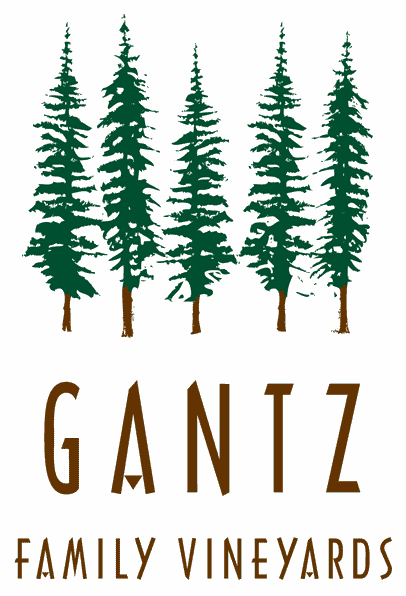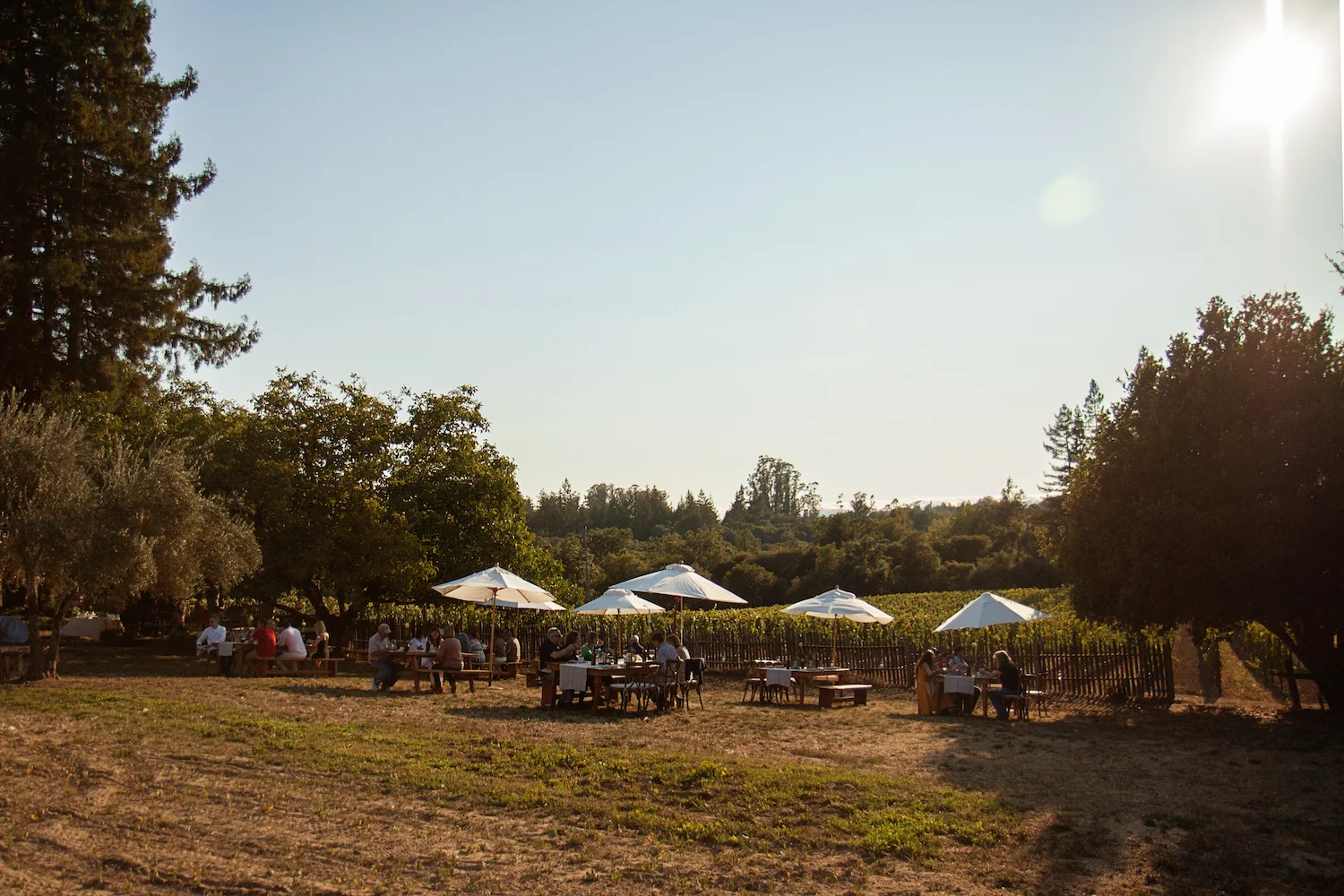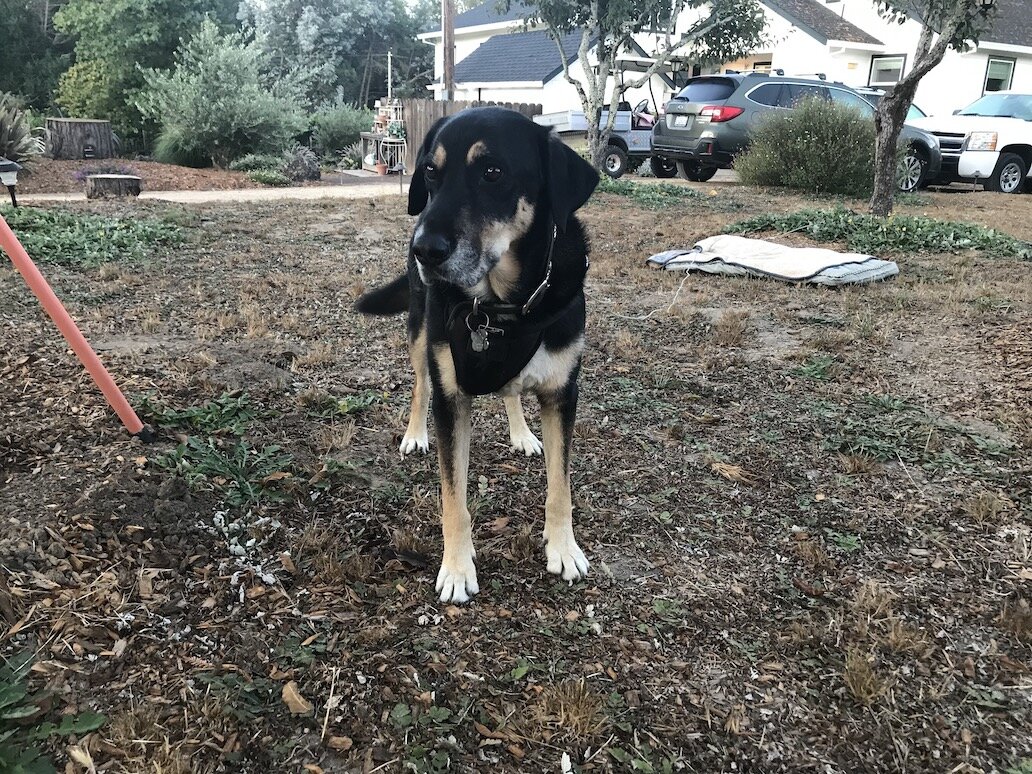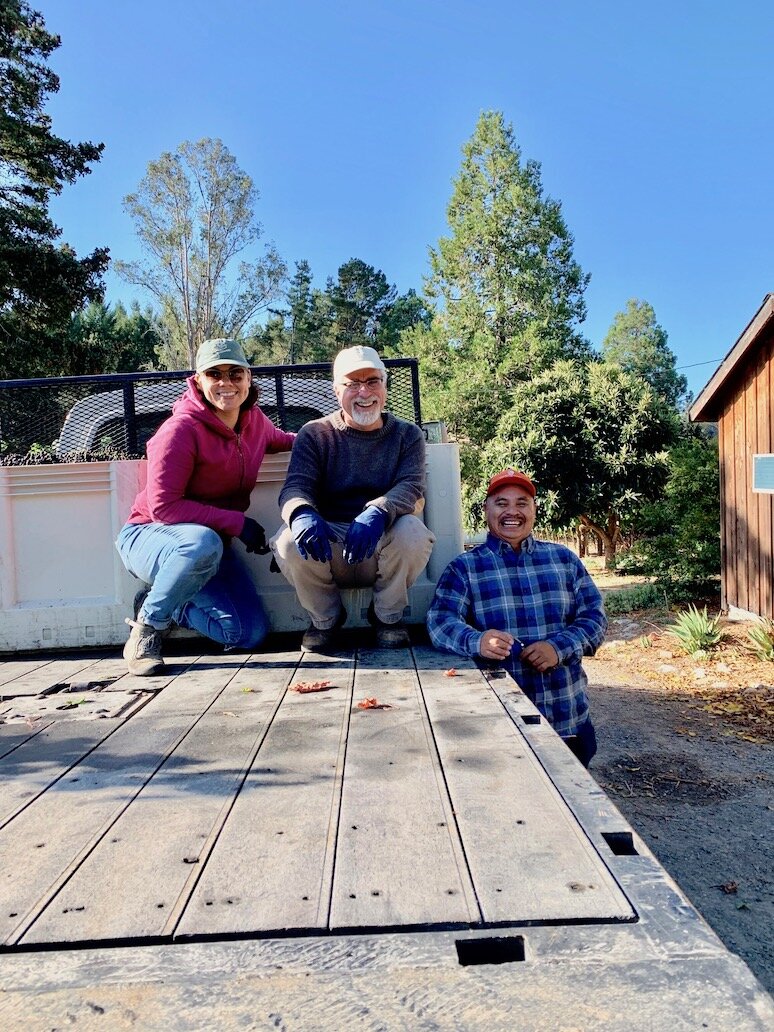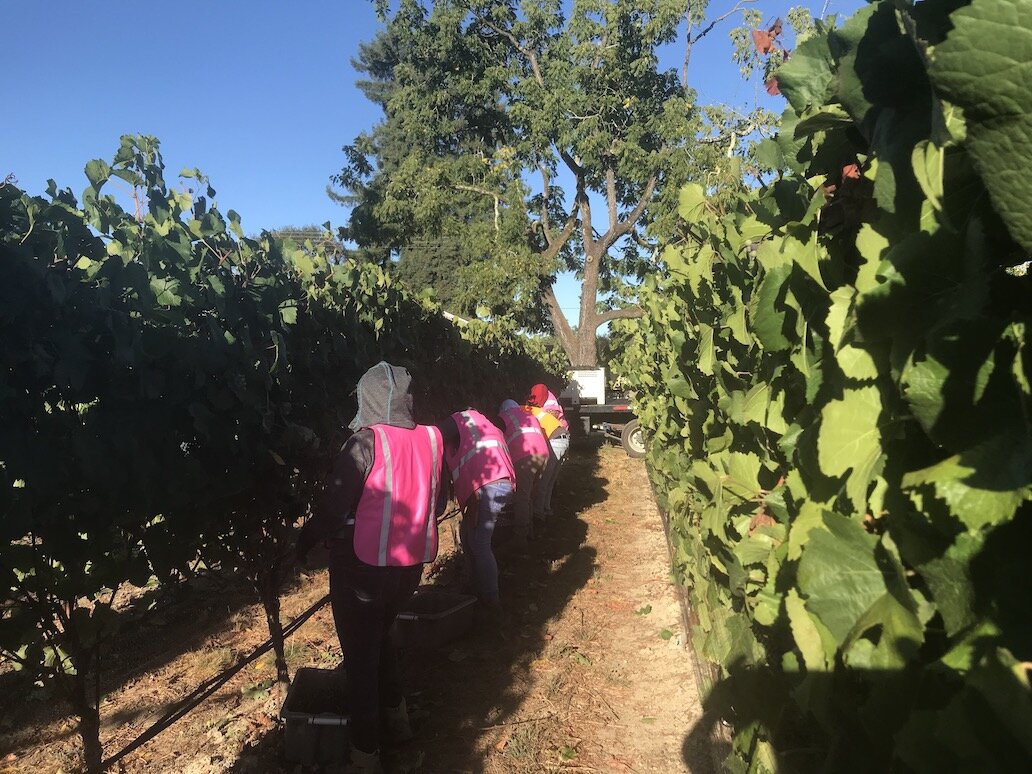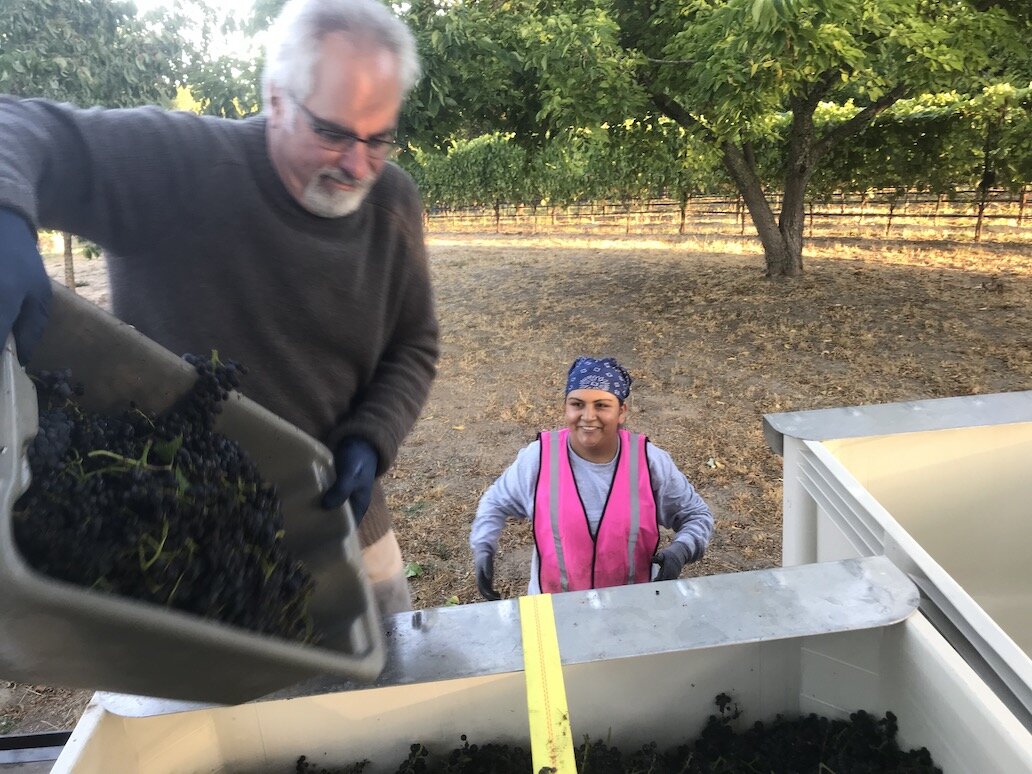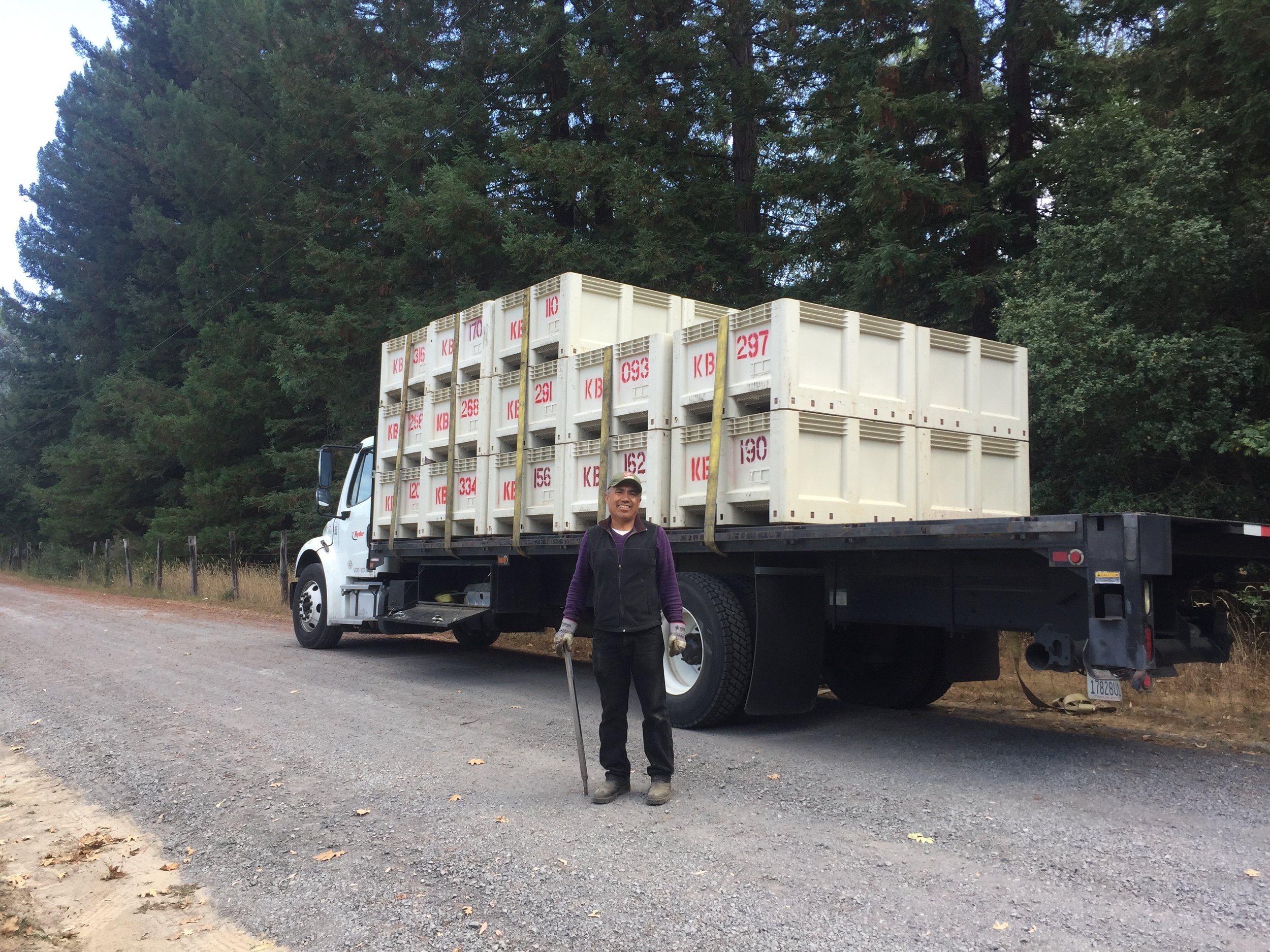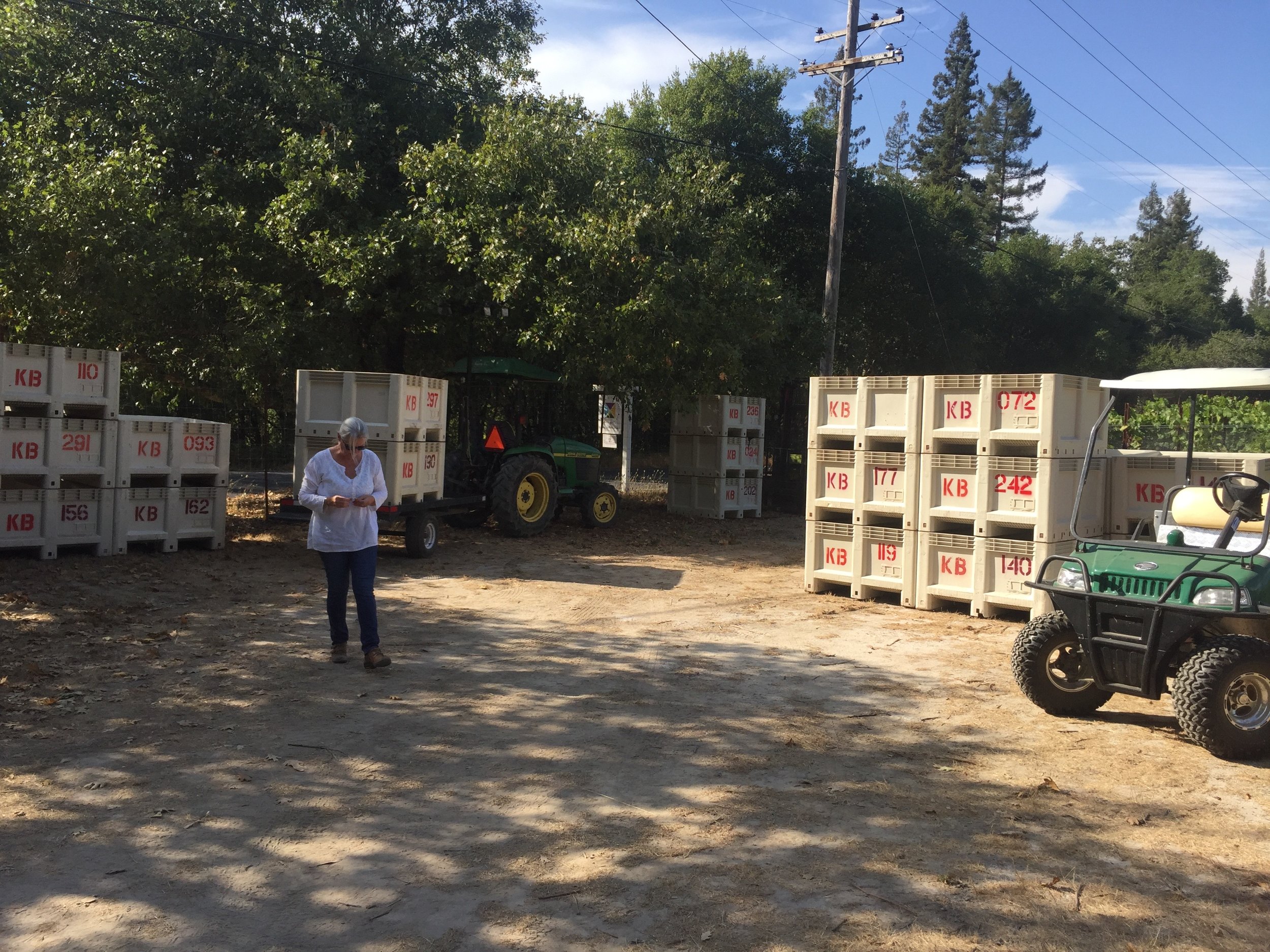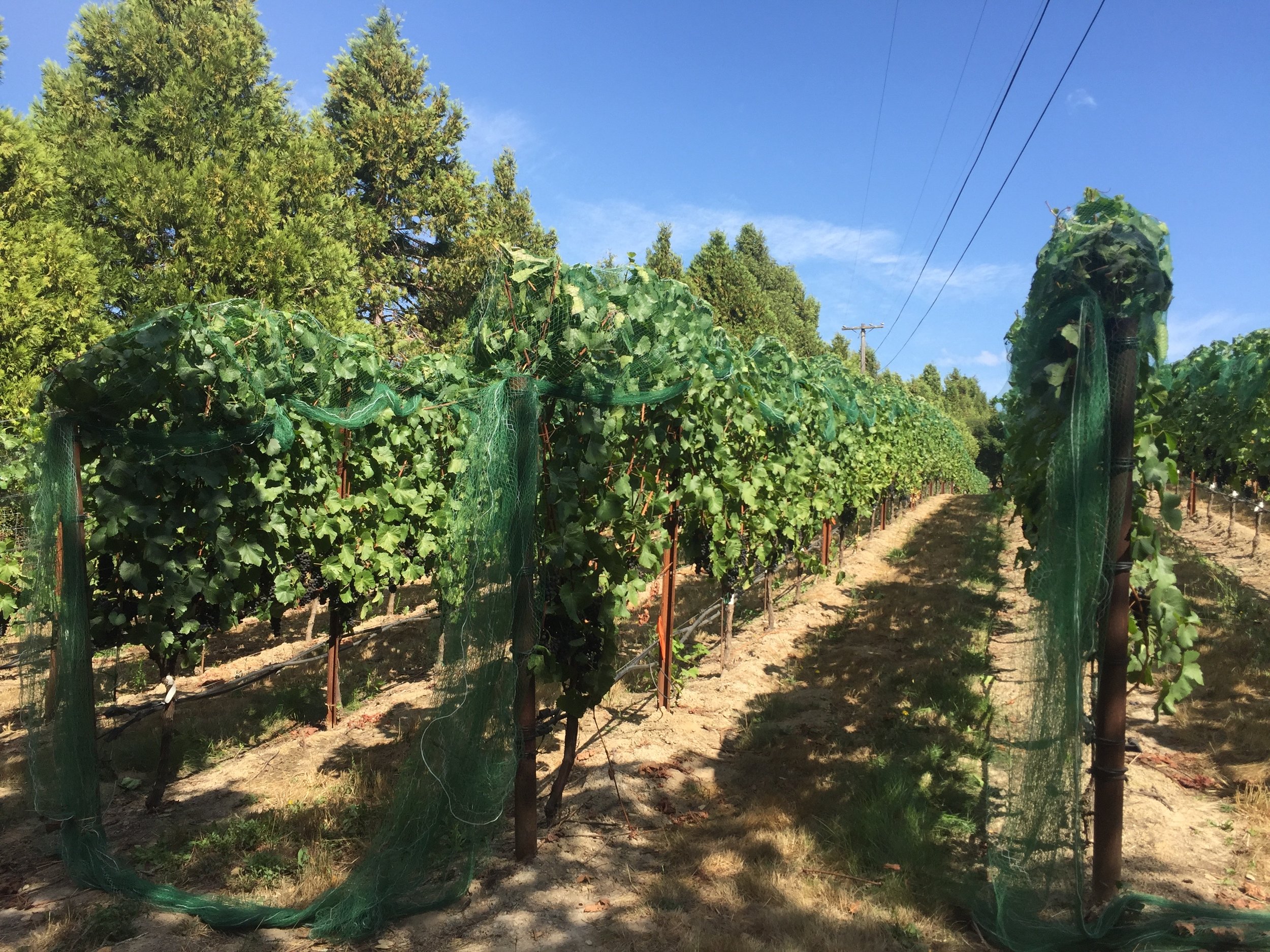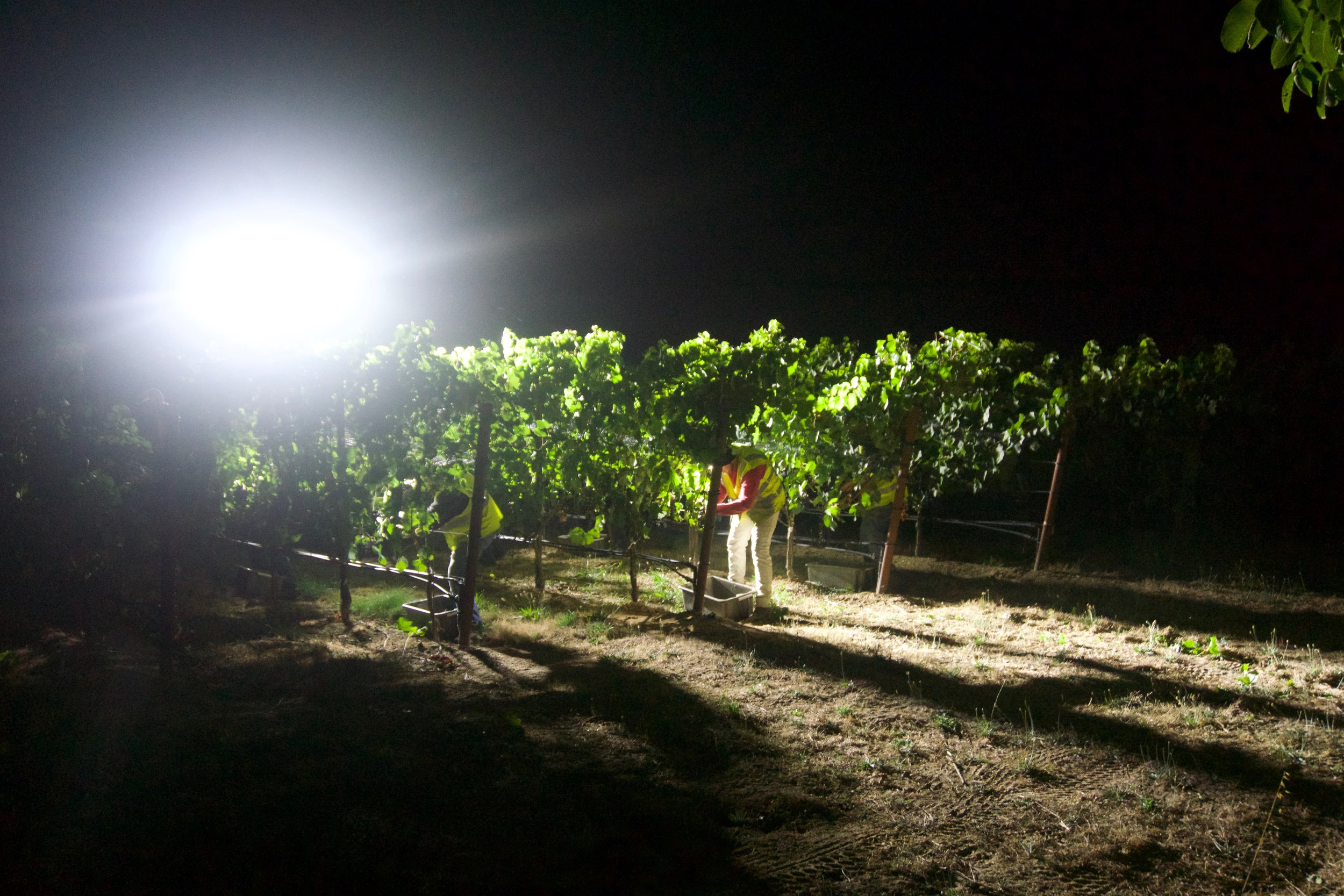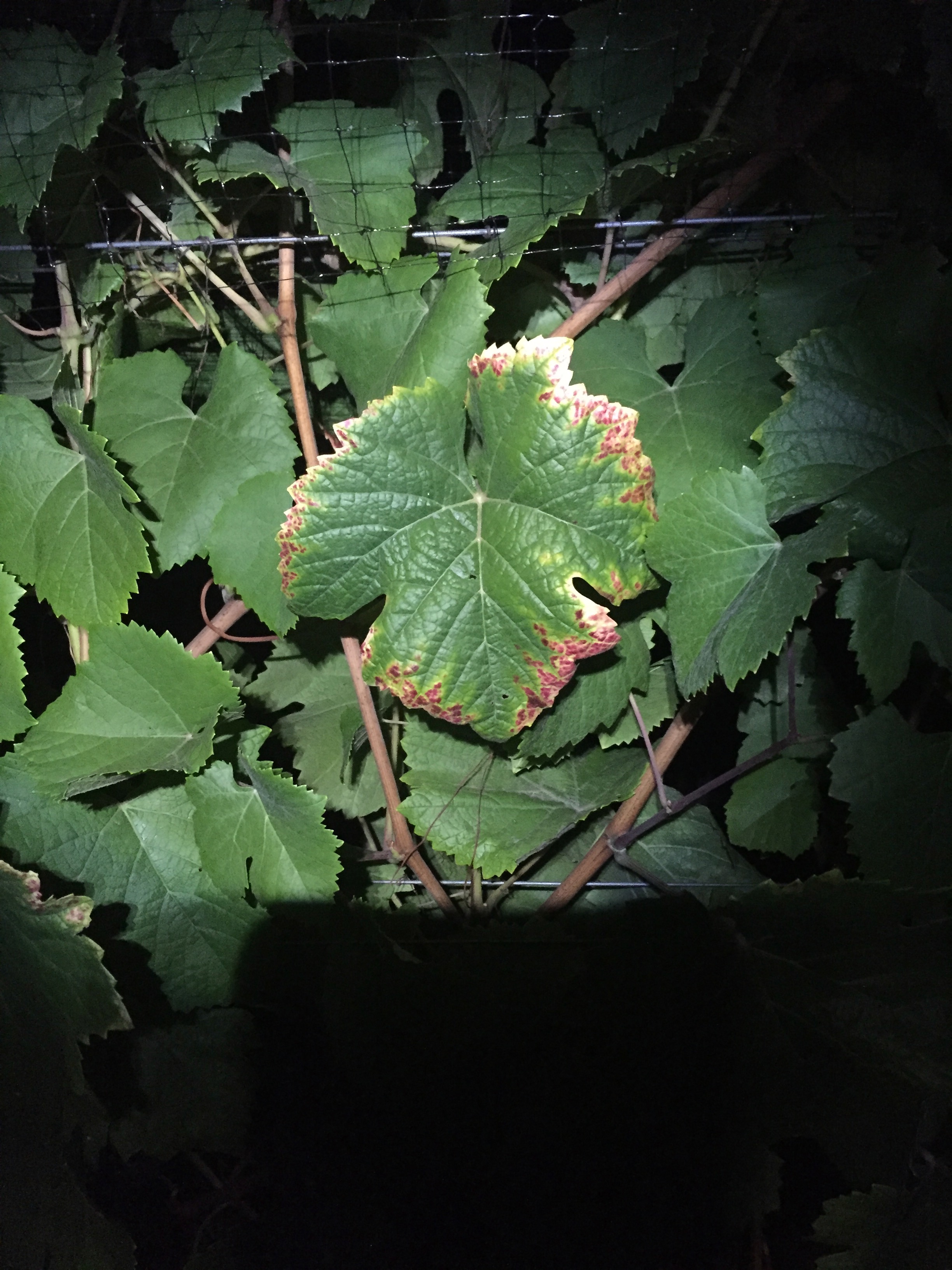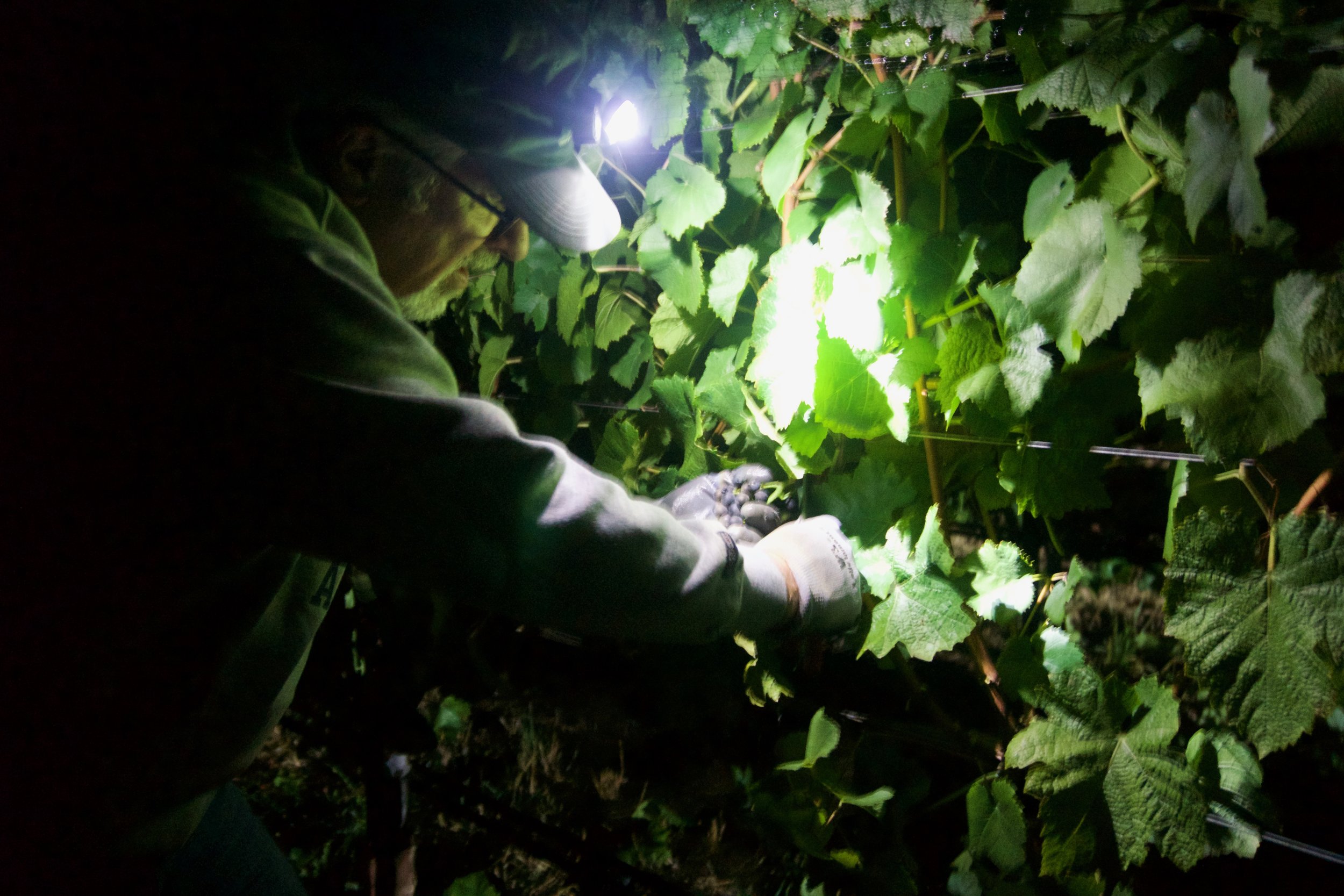Pinot Noir at Gantz Family Vineyards. Image courtesy of AldenAlli.
‘Tis the season to reflect on 2020, and what a year it was! There is so much we could talk about, but we’ll confine ourselves to the year in farming. Farming, like life, is full of ups and downs, and 2020 seemed to provide both ups and downs in abundance.
For us, the year started on a very positive note, as we rekindled our relationship with Dan Kosta. We started our farming career by selling our first harvest (2013) to Kosta Browne Winery, then one of the top Pinot Noir producers in the world. Dan Kosta and Michael Browne created an amazing brand, treated us as partners and family and we always felt incredibly fortunate to be a part of their vision. After six wonderful years, Dan and Michael went on to other projects and ultimately so did we. So, starting anew with Dan and his team, including winemaker Shane Finley, and their AldenAlli project felt like a homecoming and has made us very happy!
AldenAlli and Gantz Family Vineyard teams. Image courtesy of AldenAlli.
For 2020, and hopefully into the future, our grape purchasing partners are AldenAlli and Lombardi Wines, our old friends and fellow Kosta Browne alums, Tony Lombardi, and his winemaker, Cabell Coursey. Being back among friends was a great way to start the farming year, and 2020 unfolded wonderfully. One of the exciting things about working with new people is that you see your vineyard and farming practices through new eyes, which allows you to revisit past practices and learn. Cabell had said that he established an “area of focus” each year, picking one part of his practice to focus on and seek to approve, which seemed to us to be a great idea. So, we began the year with a commitment to focus, with our vineyard manager Jim Pratt, operations manager Jose Cervantes and their team, on our irrigation strategies in an attempt to improve grape quality. The year was unfolding beautifully with a good (but not excessive) crop and great conditions.
Then came August, usually a time when most of our farming work is done, and we are simply (impatiently) waiting for harvest. In the predawn morning of August 16, Celeste and I were awoken in the middle of the night by a huge lightning storm that lit up the sky all around us. It was beautiful and awesome, but unbeknownst to us, it and other lightning storms that night were responsible for starting hundreds of fires in both Northern and Southern California (over much of the Western United States, in fact), which burnt over the next few weeks. While it was uncomfortable here for a while, the biggest consequence was a temporary one—the area was blanketed with smoke for a month or two. All that smoke was a game changer for us.
Smoke contains phenols (specifically guaiacol and 4-methylguaiacol, among others) which in higher concentrations contribute to smoky flavors in wine. Interestingly, they are also present in toasted oak barrels, and contribute to the appealing flavors attributed to wine aged in oak. Definitely a case of too much of a good thing. These flavor compounds are absorbed into the grapes through the skin and can result in a condition in the finished wine called “smoke taint,” which is pretty much exactly what it sounds like.
So, after the smoke cleared (so to speak), we met with our winemaking partners to consider what should be done, and decided on a testing strategy to determine whether the smoke taint phenols were present in our grapes. And, it turns out, they were.
“...Grape growing and wine making are endeavors where good enough is never OK, and continued improvement, learning and commitment to excellence are key. ”
You might imagine that, at that point, the question of what to do about it became a matter of great debate. Not having a crop for 2020 affects us, of course, but it also affects our winemaking partners because it means no revenue from wine sales for that vintage. But the decision was easy. Our goal as growers and our partners goals as winemakers is to make incredible wine, and the risk that wine made from our 2020 vintage might not be incredible was enough for all of us to quickly conclude that we should sit out the 2020 vintage.
Through this all, we were reminded that grape growing and wine making are endeavors where good enough is never OK, and continued improvement, learning and commitment to excellence are key. Second, we learned that who your partners and whether or not you and they have shared standards and goals is critical. We are so happy to be partners with AldenAlli and Lombardi, and to learn that our goals are aligned. We know that we will be able to do it again, with better results. Third, we found out that the old saws about agriculture being a risky business are true. While we didn’t have pestilence, we did have fire and plague (COVID, anyway) and the damage visited on our community from this 1-2 punch is real.
Sitting at home in the Russian River Valley today, you would have to look hard to see any evidence of the fires. The air is clear and the fall weather is lovely. Once the COVID vaccine is widely available and you are ready to travel again, we want to let you know that the Russian River Valley is here waiting for you, as beautiful as ever and full of people dedicated to doing whatever it is they have chosen to do as well as humanly possible. We and our friends will be here ready to greet you! And, let’s hope 2021 is better than 2020! Happy New Years and best wishes to all of you!
Gantz Family Vineyards. Image courtesy of AldenAlli.
